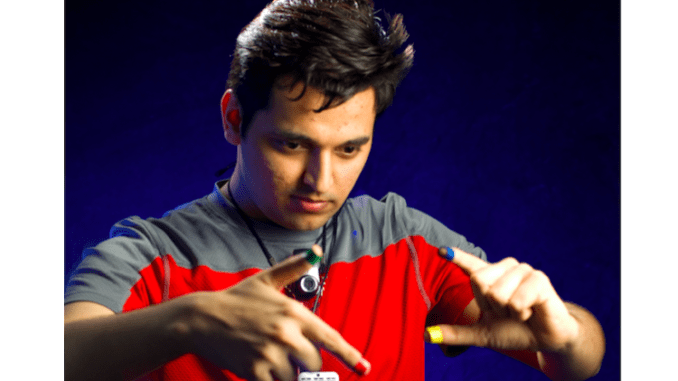
Artificial Lawyer recently caught up with Pranav Mistry, Head of Innovation, Samsung Mobile, who will be the keynote speaker at The British Legal Technology Forum 2019. In this interview he discusses AI, machine learning and the future of innovation in the law.
Why are you interested in legal tech?
The field of tech is no longer an industry on its own. It is woven into every industry and everything we do today. Take agriculture, finance, or the automobile industry. There is no way to take tech out of these and still make sense of that industry independent of it. For example, we want our cars to be connected, to play streaming music for us, or even to find their own way, just like we do with our smartphones.
This change, that tech has become a de facto way of doing things, is also not so strange in relation to legal. I believe that there are always better ways to do things than we do today, or were doing yesterday. And AI, machine learning, Big Data, and other technologies, will lead the legal field to its much needed transformation, just the same way it did to finance, automobiles or the medical industry.
For example, by bringing in radar and machine vision our cars can drive themselves. And it is AI and machine learning that helps us to more precisely detect a cancer cell. Therefore the next big trend in legal will most probably be driven by new tech as well.
But, because of the abundance of data, there will also be privacy and security concerns, and those are important topics.
So the role of tech in the legal tech industry is both about making it more efficient and faster, but also the need to address issues and challenges created by tech itself. Personally, both of these aspects of technology and their relationship to legal industry interest me.
What do you think we will see in the future in terms of the use of AI in the legal field?
The one trend that we may see in the near future is the complete automation of some tasks in the legal space. The major advantages of these techniques will be security and privacy of sensitive information, which is at the heart of the legal field, just like in the medical field.
Another area where AI will play a crucial role in the legal space is around handling, or I would rather say counter-handling, non-lawful AI players. While some AI technology will be put to use for good purposes, there is no doubt that there will also be more and more AI-powered illegal activities. The role of AI for assuring a fair and lawful system will therefore be pivotal.
Does it surprise you how little law firms spend on R&D?
It does. But I am sure it is only a matter of time before this changes. With the current pace of innovation we must accept that we must be ready for change or be replaced by someone else.
There is no better way to see this than simply look at the list of top 10 listed companies by their market cap. In just the last 10 years we have seen that one by one the traditional players, who resisted change, have been replaced there.
There is no alternative to innovation and R&D. And R&D is about investing in the future, which by definition given its current speed is really just tomorrow. I have no doubt that we will see law firms increasingly hiring AI and machine learning experts as well. Again, it is a matter of time I believe.
Does your own company’s inhouse legal team make use of automation and AI technology?
AI is everywhere. Our manufacturing line and factories were the first place we put AI into practice. Our sales and marketing team uses AI to understand market trends and consumer demands. And, of course AI is powering our software and devices. Where there is data, there is ‘AI’.
So, yes, our inhouse legal team also uses tools and services powered by AI, and I am sure that this trend is going to increase across the legal sector as a whole.
Thank you, Pranav. We look forward to seeing you give your keynote speech on March 12 in London next year.
For more information about the British Legal Technology Forum, see the link: here.
